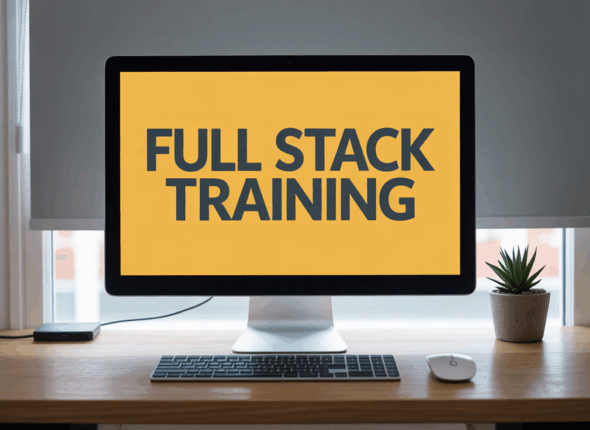World
Class Instructor
1:1 with
Industry Expert
400+
Global Hiring
55%
Avg. Salary Hike
- Overview
- Course Details
- Syllabus
- FAQ
Acquire Comprehensive Programming Skills: Master Full Stack Development, Earn Certification, Launch Your Tech Career!
The Elysium Certified Full Stack Core Programmer training course offers in-depth training in both Python and Java, designed to equip students with essential full-stack development skills. This comprehensive program includes two modules: Full Stack Developer Course – Python and Full Stack Developer Course – Java. Upon completion, candidates will have expertise in backend and frontend technologies, making them proficient in developing complete web applications. The course is structured with real-world projects, ensuring practical experience. Additionally, students receive 100% placement assurance, preparing them for successful careers in tech.
2.2
Version
180 Hrs
Duration
60 Hrs
Theory
120 Hrs
Practical
Version
2.2
Duration
65 Hours
Theory
12 Hours
Practical
65 Hours
- Real-World Programming Projects
- Personalized coordinator.
- Trainer feedback.
- Trainer availability post sessions.
- Get your staff certified.
- Certificate from governing bodies.
- Recognized worldwide
- Hands on assignment
- Master core programming fundamentals, including Java, Python, and C++.
- Dive into advanced concepts such as front-end development with HTML, CSS, and JavaScript.
- Learn to build and manage robust back-end systems using Node.js, Express.js, and databases.
- Gain expertise in version control with Git and GitHub.
- Understand deployment and DevOps practices, including Docker and cloud platforms.
- Develop practical skills through hands-on projects and real-world applications.
Top companies offer this course to their employees
Course was selected for our collection of top-rated courses trusted by businesses worldwide.




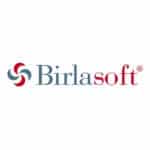
Salary
PER ANNUM
₹ 7.9 L
Job Growth
Current Month
25%
Offer Jobs
2026
1500
The Elysium Certified Full Stack Core Programmer – Training Course offers learners the opportunity to master the essential skills required for modern full stack development. Dive into the exciting field of software development and learn core programming languages, front-end frameworks, and back-end technologies with the help of experienced instructors. Learners will emerge prepared to build and manage dynamic applications. Here are some of the skills you will need to learn if you want to become a full stack developer.
The Full Stack Core Programmer course teaches you to master the concepts of programming. Through this training, you will learn Front-End Development, Back-End Development, Database Management, Version Control, and Deployment Strategies.
- Full Stack Development is the infrastructure that enables the creation of comprehensive and interactive applications.
- Full Stack Development involves the comprehensive study of both client-side and server-side technologies.
- Developing Applications includes designing, coding, testing, and deploying scalable solutions.
- Full Stack Developers understand the entire development lifecycle and derive meaningful insights to optimize performance.
- Full Stack Development practices are the foundation on which modern software applications are built.

Our Training Program Benefits
- Live, interactive training by experts.
- Curriculum that focuses on the learner.
- Challenge-based, hands-on project.
- Opportunities for team building.
- Cost- saving training.
- Convenient for your employees.
- Completely tailor-made curriculum.
Chapter-1 Html
- HTML Editing Tools
- Document Structure
- HTML Tags
- Information Browsers Ignore
- Specifying Color in HTML
- Setting Up an HTML Document
- Using Tags
- Formatting Text
- Introduction to Frames
- Horizontal Rules
- The Image Basics
- The IMG Tag and Its Attributes
- Media Queries
- Introduction to Tables
- Affecting Table Appearance
- Table Troubleshooting
- Standard Table Templates
- Multiport Images in Tables
- The Basic Form (FORM)
- The FORM Elements
- The New FORM Attributes (HTML 4.0)
- Affecting the Appearance of Forms
- Unconventional Use of FORM Elements
- How SSI is Used
- The SSI and the Server
- Adding SSI Commands to a Document
- Using Environment Variables
Chapter-2 CSS
- Concept of CSS
- Creating Style Sheet
- CSS Properties
- Setting up the initial HTML and CSS files
- Using the inline block value
- Changing a Table to Use a Display block
- Adding Small screen content Element
- Introduction
- Border properties
- Padding properties
- Margin properties
- RWD Introduction
- RWD Viewport
- RWD Gridview
- RWD Media Queries
- RWD Images
- RWD Videos
- RWD Frameworks
- RWD Templates
- CSS Animation
- CSS Animation property
- Delay on Animation
- Run Animation in Reverse Direction or Alternate Cycles
- The speed curve of the Animation
- The fill-mode of on Animation
- How to Build the Navigation Bar
- How to Build the Showcase Section
- How to Build the Lower Section
- How to Build the Footer Section
- How to Make the Page Responsive
Chapter-3 Bootstrap
- Grid System
- Stocked/Horizontal
- Grid Small
- Grid Large
- Grid Medium
- Grid XXL
- Adding Dropdowns via Data Attributes
- Dropdown within a Navbar
- Dropdowns within Button
- Bootstrap Split Button Dropdown
- Dropdowns inside Button Groups
- Creating Dropup, Dropleft, and Dropright Menus
- Creating the Right Aligned Dropdown Menus
- Adding Headers to Dropdown Items
- Disabling Items within a Dropdown
- Adding Dropdowns via JavaScript
- Methods - toggle, show, hide, update, dispose, Events
- Adding Logo Images to Navbar
- Adding Dropdown to Navbars
- Placing Search Form inside Navbar
- Creating the color scheme for Navbars
- Bootstrap Fixed Navbar
- Creating Navbar with Bootstrap
- Styling images with bootstrap
- Creating Responsive images and videos
- Horizontal alignment of images
- Using media
- Creating Nested media object
Chapter-4 Java Script
- Embedding JavaScript in HTML
- Execution of JavaScript code
- The window object
- Dialog boxes
- Timers
- The location object
- The navigator object
- Browsing history
- Document structure
- Selecting document elements and query selectors
- Moving through DOM tree
- HTML elements and attributes
- Creating, changing and deleting nodes
- Event propagation
- Event handlers registering and invocation
- Event object
- Types of event
- JavaScript and HTTP communication
- Synchronous and asynchronous requests
- Multimedia basics
- Canvas API basics
- Cookies
- Web Storage
- IndexedDB
- Filesystem security
- The Same Origin Policy
- Plugins
- Cross-Site Scripting
Chapter-5 Jquery
- Introduction
- JQuery Syntax
- JQuery Selectors
- JQuery Events
- JQuery Hide/Show
- JQuery Fade
- JQuery Slide
- JQuery Stop()
- JQuery Callback()
- JQuery Get/Set
- JQuery Add/Remove
- JQuery CSS Classes
- Web Hosting Basics
- Types of Hosting Packages
- Registering Domains
- Defining Name Servers
- Using Control Panel
- Creating Emails in cPanel
- Using FTP Client
Chapter-6 Basics
- Overview
- Environmental setup
- Installation procedure
- Different ways to write a Python program
- Execution steps and process
- Understanding a simple program
- Program execution flow
- Python Virtual Machine
- Examples
- What is a variable?
- Properties of variables
- Creating variables
- Invalid cases for variables
- Multiple variables in a single line
- Single value for multiple variables
- Variable re-initialization
- What is data type?
- Different types of data types
- Built-in data types
- Sequences
- Accessing range values
- User-defined data types
- Converting from one data type into another data type
- What is an operator?
- Different types of operators
- Arithmetic operators
- Assignment operator
- Unary minus operator
- Relational operators
- Logical operators
- Membership operators
- Identity operators
- What is Flow control?
- Sequential flow
- Conditional flow
- Looping flow
- Sequential statements
- Conditional or Decision-making statements
- If statement
- If else statement
- If elif else statement
- What are Looping Statements?
- While and for loop
- Where loops with else block flow are helpful?
- Break statement
- Continue statement
- Pass statement
- The return statement
- What is a string?
- What is Slicing?
- What is Immutable?
- Strings are immutable
- Mathematical operators on string objects
Chapter-7 Function, Module & Packages
- Positional Arguments
- Keyword Arguments
- Default Arguments
- Variable Length Arguments
- Keyword Variable-length Argument
- Function vs Module vs Library
- Types of Variables
- Local Variables
- Global Variables
- Global Keyword
- Recursive Function in Python
- Lambda Function (Anonymous Functions) in Python
- Filter() Function in Python
- Map() Function in Python
- Reduce() Function in Python
- Decorators in Python
- @ Symbol in Python
- Generators in Python
- Next Function in Python
- What is a Module?
- Renaming or Aliasing a Module
- dir() Function
- What is a Package?
- Advantage
Chapter-8 Database Handling
- Create Database Connection
- DML and DDL Operation with database
- Performing transactions
- Handling database errors
- Disconnecting Database
- SQL vs NoSQL
- MongoDB
- PyMongo
Chapter-9 Object Oriented Programming
- What are Constructors
- Is constructor mandatory in Python?
- Can a constructor be called explicitly?
- How many parameters can constructor have?
- Parameterized and Non-Parameterized Constructors in Python
- Difference between a method & constructor in Python
- Difference between a method & a function
- Types of Class Variables
- Instance Variables
- Where instance variables can be declared?
- Accessing instance variables
- Static Variables
- Declaring static variables
- Accessing a static variable
- Local Variables
- Types of Methods in a Class
- Instance Methods
- Setter and Getter methods
- Class Methods
- Static Methods
- Nested Classes
- Garbage Collection
- Polymorphism
- Types of Polymorphism
- Overloading
- Operator overloading
- Method overloading
- How we can handle overloaded method requirements
- Constructor Overloading
- Overriding
- Method Overriding
- Constructor Overriding
Chapter-10 Exception Handling & Files
- Types of Error
- Syntax and Runtime Errors
- What is an Exception?
- Exception Handling in Python
- Why do we need Finally Block?
- Finally Block in Python
- Why not try-except block for clean-up activities?
- Different control flow cases of try-except-finally in Python
- Nested try-except-finally blocks in Python
- Different cases and scenarios
- Else Block in Python
- Possible Combinations with try-except-else-finally
- What is a File?
- Types of Files
- File Modes
- Opening and Closing a File
- Properties of File Object
- Writing data to a File
- Reading data From a File
- With Keyword
Chapter-11 Multithreading
- What is Multitasking?
- Process-based and Thread-based Multitasking
- Applications of Multithreading
- How to Implement Multithreading?
- Different Ways to Create a Thread
- Creating a Thread using Thread Class
- Creating a Thread by Inheriting Thread Class
- activeCount()
- enumerate()
- isAlive()
- join()
- join(seconds)
- Synchronization
- How to Implement Synchronization?
- Synchronization Using Lock Concept
- Synchronization Using RLock Concept
- Difference Between Lock and RLock
- Synchronization Using Semaphore
- Bounded Semaphore
- What is Inter Thread communication?
- Inter Thread communication by using
- Event Objects
- Condition Object
- Semaphore
- Locks
- Queues
- FIFO Queue
- LIFO
- Priority Queue
Chapter-12 Django Framework
- Introduction to Django
- How to create Django App
- URL Mapping
- Templates
- Introduction to static file
- Django Model overview
- Creating model
- Model Template view creation
- Django Form and validation
- Relative URL with Templates
- Activating the admin interface
- Using the admin interface
- Users, Groups and permission
- Django Forms
- Form Validation
- Model form
- Relative URLs with Templates
- URL templates Inheritance
- Quick note on Custom templates Filter
- Template Filters and Custom Filters
- Django Passwords
- Deploying Django Framework
- Overview of models
- Creating model
- Configuring the database
- Your First App
- Using Django with MySQL
- Population Script
- Models-Templates-Views Paradigm
- Inserting and Updating data
- Selecting Object
- Deleting Object
- Get Session
- Set session
- Session Attributes
- Methods in Session
Chapter-13 Flask Web Framework
- What is a Flask?
- WSGI
- Werkzeug
- Jinga2
- Prerequisite
- Install Flask on Windows
- Code Structure of Flask framework
- In-Built Server of Flask
- Add to System Path
- Configure in IDE
- How a Flask App works
- Routing and View Functions
- Server startup
- Basic app object
- Jinga2 Template Engine
- Rendering Templates
- Variables
- Control Structures
- Flask-Bootstrap
- Custom Error Pages
- Creating HTML Templates
- Adding more HTML pages
- Links
- Static files
- Localization of Dates and Time with Flask-Moment
- CSRF Protection
- Form classes
- HTML rendering of Forms
- Form handling in View Functions
- Redirect and User Sessions
- Message Flashing
- SQL or NoSQL
- Flask-SQLAlchemy
- Model Definition
- Relationships
- CRUD Operations
- Modifying Rows
- Deleting Rows
- Querying Rows
- Database use in View function
- Flask-Migrate
Chapter-14 Cherrypy
- Environmental Setup
- Built-in Http Server
- Coaching Tool
- Decoding Tool
- Working Application
- Authentication
- Authorization
- Structure
- Encapsulation
- Error Handling
- Presentation Layer
- Use of Ajax
- Demo Application
- Unit Testing
- Functional Testing
- Load Testing
- Deployment of Application
Chapter-15 Introduction to Java
- Keywords, Variables and Operators
- Data Types
- Java String Basics
- Type casting
- Operators
- Arrays
- Java Statements
Java Methods
- Java Method parameters
- Java Method Overloading
- Java Scope
- Java Recursion
Chapter-16 Java Classes
- OOPS
- Classes/Objects
- Class Attributes
- Class Methods
- Modifiers
- Encapsulation
- Packages
- Inheritance
- Polymorphism
- Abstraction
- Interface
- Enums
Chapter-17 Java Web Application Technologies
- Java Date
- LinkedList
- HashMap
- HashSet
- Iterator
- Explanation
- Files
- Read Files
- Delete Files
Chapter-18 Servlet
- Servlet Interface
- Http Servlet
- War File
- Servlet Request
- Servlet Collaboration
- ServletConfig
- ServletContext
- Attribute in Servlet
- Session Filter
- Servlet CRUD
- Servlet Pagination
- Servlet Miscellaneous
- Development
Chapter-19 JSP (Java Server Pages)
- JSP - Scripting Elements
- JSP - Directives
- JSP - Actions
- JSP - Expressions
- JSP - Implicit Objects
- JSP - Request
- JSP - Response
- JSP - Session
- JSP - Exceptions
- JSTL Core Tags
- JSP Advanced
Chapter-20 JDBC API
- Prepared Statements
- Create
- Select
- Update
- Insert
- Result Sets
Chapter-21 SQL
- What is DQL?
- Purpose Of DQL
- Select
- What is DML?
- Purpose Of DML
- Insert data
- Update data
- Delete Data
- Lock data
- What is DCL?
- Purpose of DCL
- Grant data
- Revoke data
- What is TCL?
- Purpose Of TCL
- COMMIT
- ROLLBACK
- SAVEPOINT
- Hands on INSERT data
- SELECT
- Hands on SELECT query
- Multi inserts
- Hands on Multi inserts
- NOT NULL
- Hands on NOT NULL
- DEFAULT values
- Hands on DEFAULT values
- AUTO INCREMENT
- Hands on AUTO INCREMENT
- ORDER BY
- ALIASES
- UNIONS
- CONSTRAINTS
- VIEWS
- What is primary key?
- Creating a primary key
- Dropping a primary key
- What is foreign key?
- Creating a foreign key
- Dropping a foreign key
Chapter-22 Introduction
- Getting the Required Libraries for Hibernate
- Creating a Hibernate Persistent Class
- Providing an XML-based Hibernate Mapping
- Providing an Annotation-based Hibernate Mapping
- Providing a Hibernate Configuration Using an XML File
- Providing a Hibernate Configuration Using Java
- Configuring Hibernate Programmatically
- Introduction
- Building a Session
- Creating a Generic Session Factory Class
- Opening a New Session
- Opening a Stateless Session
- Persisting an Object to the Database
- Fetching an Object from the Database
- Deleting an Object from the Database
- Updating an Object
- Declaring a Class as an Entity and Creating a Table in the Database
- Creating a Column in the Database Table
- Creating the Primary Key and Composite Primary Key in the Java Class
- Creating an Auto-generated Column
- Introduction
- Persisting a List
- Persisting a Set
- Persisting a Map
- Persisting an Array
- Introduction
- One-to-One Mapping Using a Foreign Key
- One-to-One Mapping Using a Common Join Table
- One-to-One Mapping Using a Common Key
- One-to-One Mapping or Many-to-One Mapping
- Many-to-Many Mapping
- Introduction
- Working with an Alias
- Performing Aggregate Operations
- Using a Subquery with a Criteria
- Executing a Native SQL Query
- Using a Query Language (HQL)
- Using Formulas in Hibernate
- Working with Named Queries
Chapter-23 Getting Started
- What is Spring?
- Setting up your system
- Introducing Maven
- Using Maven on the command line
- Classpath Contexts
Chapter-24 Basic Bean Configuration
- Setting Bean Properties
- Constructor Arguments
- Dependency Injection
- Bean Scope
- Factory Beans and Methods
- Bean Namespaces and List of Beans
Chapter-25 Auto Wiring
- Autowiring by type
- Autowiring by name
- Autowiring by constructor
- Default Autowiring
- Removing Autowire Ambiguities
Chapter-26 Wiring With Annotations
- "Autowired" Annotation
- Optional Beans
- Using Qualifiers
- Annotation-Based Init and Destroy Methods
- Setting property values via Annotation
Chapter-27 Spring Expression Language (Spel)
- Introduction SPEL
- Using SPEL with Annotation
- Some useful SPEL operators
Chapter-28 Working With Databases
- Creating database with MySQL
- Implementing DAO Pattern
- Downloading connection jar
- Configuring connection with Apache
- JDBC Templates
- Querying Database (CRUD Operations)
- Transactions with prepared statements
Chapter-29 Web Applications With Spring Mvc
- Moven Concepts
- Brinqinq in Moven
- Dispatcher Servlet
- Adding data to the session
- Brinqinq in DAO code and controllers
Chapter-30 Aspect Oriented Programming (Aop)
- Annotation based aspects
- Wildcards in pointcut expressions
- Advice types: after, around, etc.
- Proxies
- Pointcuts
Chapter-31 Spring Web Flow
- Introducing Web Flow
- Flow Registry
- Hooking up URLs
- Messages
- Validating Web Flow Forms
Chapter-32 Json And Ajax
- Creating JSON server
- Updating dynamically with jQuery
- Generating pages with JavaScript
- Posting back JSON Data
- User Feedback
- Sending Email with Spring Mail
Chapter-33 Spring Data Jpa
- JPA dependency
- Maven Dependency
- Create the model class
- Create the repository
- Show SQL
Chapter-34 Create Rest Crud Api
- Rest web services using Spring Boot
- Create DB table
- Model and repository
- JPA Annotations
- Rest CRUD API creation
Chapter-35 Creating Rest Client
- Introduction
- REST Template GET Method
- POST Method
- PUT Method
Chapter-36 Spring Boot Micro Services
- What is Microservice
- Creating Microservices
- TOMCAT Deployment
- Thymeleaf Concepts
Chapter-37 Projects
- Task Management System
- Event Management Website
- Personal Finance Management Tool
- Personal Portfolio Website
- E-learning Platform
- E-learning Platform
What is the Elysium Certified Full Stack Core Programmer - Training Course offered by Elysium Academy?
The Elysium Certified Full Stack Core Programmer - Training Course at Elysium Academy provides in-depth training in full-stack development using core programming languages and technologies, preparing you to build both front-end and back-end applications.
What makes Elysium Academy the best Full Stack Core Programmer training center near me?
Elysium Academy is the best choice for Full Stack Core Programmer training due to its hands-on approach, experienced instructors, and a curriculum that equips you with the skills needed for a career in full-stack development.
What topics are covered in this course?
Topics include front-end development with HTML, CSS, and JavaScript, back-end development with Node.js and Express.js, database management with SQL/NoSQL, version control with Git, and deployment strategies.
Do I need any prerequisites to enroll in this course?
While no formal prerequisites are required, it is recommended that participants have a basic understanding of programming concepts and some familiarity with HTML, CSS, and JavaScript.
How is the course delivered?
The course is delivered through a blend of live instructor-led sessions, hands-on labs, and self-paced study materials. This hybrid approach ensures comprehensive learning and practical experience.
What type of projects will I work on during the course?
Participants will engage in real-world projects such as developing full stack web applications, integrating front-end and back-end technologies, and deploying applications to cloud platforms.
Will I receive a certificate upon completion of the course?
Yes, participants will receive a certificate of completion from Elysium Academy. This certificate validates their skills in full stack development.
How long is the course, and how much time should I dedicate weekly?
The course duration is typically 8-12 weeks. It is recommended to dedicate around 10-15 hours per week to coursework, including lectures, labs, and self-study.
Is there support available after I complete the course?
Yes, our instructors and support team are available to provide guidance and answer any questions you may have even after the course has ended. Additionally, we offer resources for ongoing learning and professional development.
How does the Elysium Certified Full Stack Core Programmer certification benefit my career?
The certification enhances your credibility and demonstrates your expertise in full stack development. It opens up various job opportunities, increases earning potential, and is highly valued by employers in the tech industry.

- Elysium Certified Full Stack Core Programmer - Training Course Crash
- Duration: 180 Hours
- Level: Beginner
- Days: 45 Days
- Chapters: 11
- Language: English
- Certifications: Yes
- Code: EAPL/CRASH/CRTC01
- Course Code: EACCC
- Sub Category: App Development
Data Science Features

Instructor-led Live Sessions
Elysium Academy experts cultivate a focused learning environment by presenting learners with real-world industry problems and emphasizing solution-oriented approaches.

Live Training Sessions
Throughout our certified training, experienced instructors and industry professionals conduct remote sessions to impart their extensive knowledge to learners.

Flexible Curriculum
Professionals have the opportunity to acquire comprehensive knowledge in cutting-edge digital marketing through specialized certification programs.

Expert Support
Our technical support staff is available 24/7 through a ticketing system to address any inquiries you might have.

Certification
Upon completion of the course and assigned tasks, you will receive a certificate from Elysium Academy, acknowledging your achievement as a data scientist

Assignments
Before proceeding to the next lesson, it is necessary to complete a quiz at the end of each lesson to assess your comprehension.
What Will You Learn?
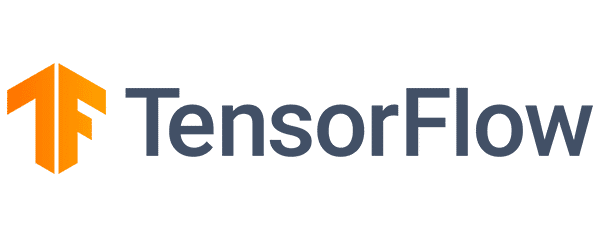
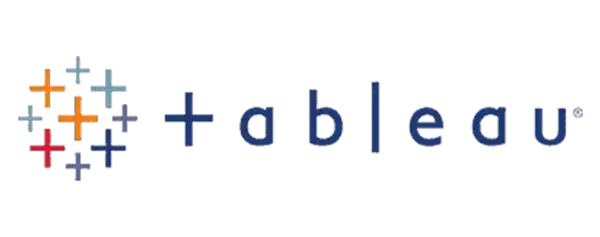




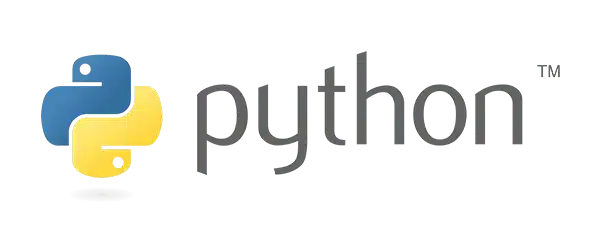

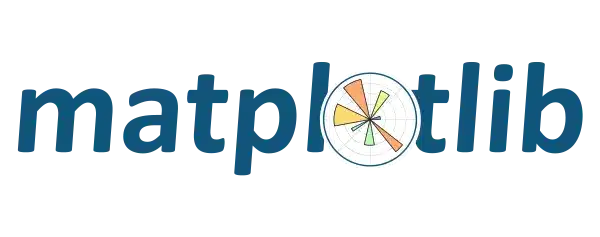

Our Latest Blogs
Best Java Training 2025: Unlock Expert Skills & Career Growth
Welcome to the best java training—your comprehensive gateway to mastering Java programming and advancing your tech career in 2025. This course…
How Our Full Stack Training Transforms Freshers into Industry-Ready Developers
In today’s rapidly evolving digital economy, the demand for skilled software developers is at an all-time high. With businesses accelerating…
1 Ultimate Guide: Digital Marketing Analytics Mastery
At Elysium Academy, we are dedicated to empowering you with the analytical prowess to not just navigate, but to truly…
Related Courses
AI Mastery For Entrepreneurs Programme
Master the essentials and advanced techniques of Python programming with our comprehensive Core & Advanced Python Training Course.
AI Engineering For Developers
Master the essentials and advanced techniques of Python programming with our comprehensive Core & Advanced Python Training Course.
AI Power Digital Marketting
Unlock the power of online marketing with our Digital Marketing Fundamentals Training Course. Master SEO, SEM, content marketing.

Recommend your friends/colleagues and earn gift vouchers worth up to INR 1000/-!
Invite friends to join our community, and receive valuable gift vouchers as a token of appreciation for each successful referral. Spread the word about our referral program today and start earning rewards!























